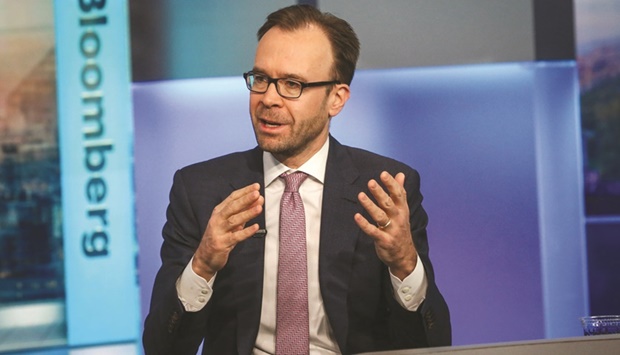In the recession debate gripping Wall Street, Goldman Sachs & Co chief economist Jan Hatzius might be considered a cautious optimist.
“We don’t have a recession in our base-line forecast,” he told Bloomberg Television’s Surveillance on Friday. “We do have significantly below-trend growth.
That rebalances the imbalance in the labour market and that ultimately helps bring inflation back down.”
Hatzius spoke before publication of the University of Michigan’s final June reading of longer-term US consumer inflation expectations sparked a stock-market rally on Friday. The report showed the forecast drawing back from an initially reported 14-year high, potentially reducing the urgency for steeper Federal Reserve interest-rate hikes.
That meshes with Hatzius’s assessment of future Fed decisions.
The central bank has hiked its benchmark overnight borrowing rate three times to an upper band of 1.75% this year to cool the hottest inflation in four decades.
“Our forecast is a terminal rate of 3.25% to 3.5% by the end of 2022,” Hatzius said. “We don’t have any additional rate hikes in 2023, basically because the economy is decelerating, inflation is coming down, and I think at that level, the Fed would probably hold.”
To be sure, the Goldman economist says the risk of a recession has gone up. “If we do have a recession, it’s likely that it would be on the shallower end. Private-sector balance sheets are in better shape than at the end of previous business cycles.”
Also, Hatzius said: “While inflation is very high, I don’t think it’s as entrenched, certainly not as entrenched in inflation expectations, as it was in previous higher inflation episodes in the 1970s and early 1980s.”
For example, the five-year breakeven rate on Treasury Inflation-Protected Securities has retreated to around 2.82% after reaching 3.73% in March. The rate represents the expected average Consumer Price Index over the term of the notes.
“Look at inflation breakevens,” Hatzius said. The credibility from the perspective of the bond market or from forecasters of the Fed’s 2% inflation target “still seems intact.”
Still, one of the drivers of inflation has been a US labour force near full employment.
“It is very difficult to reduce labour demand without the deterioration feeding on itself and then ultimately culminating in a recession,” Hatzius said.

Jan Hatzius, chief economist at Goldman Sachs & Co.


